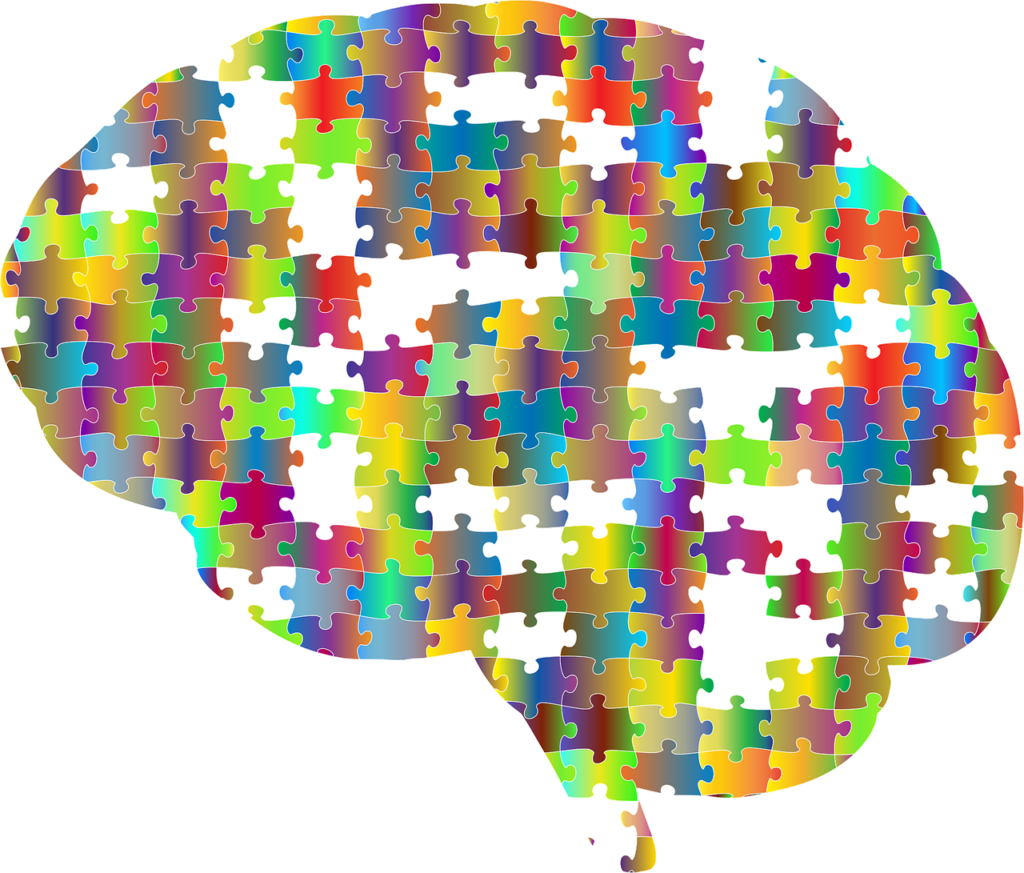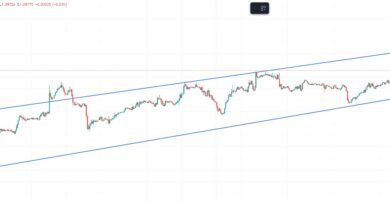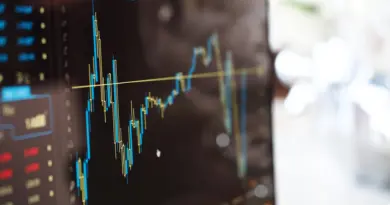Learn to use Machine Learning in Forex Trading
Machine learning in connection with forex trading refers to the use of algorithms and statistical models to analyze data and make predictions about the behavior of currency markets. Machine learning techniques can be used to analyze vast amounts of historical market data and identify patterns and trends that can be used to inform trading decisions.
For example, machine learning models can be trained on historical forex price data to predict future price movements and identify trading opportunities. These models can also be used to analyze news and social media sentiment to help traders make more informed decisions.
Machine learning is becoming increasingly popular in forex trading as it offers a powerful tool for analyzing complex market data and making predictions that are based on objective data rather than subjective analysis. However, it’s important to note that machine learning is not a silver bullet and should be used in conjunction with other analytical tools and trading strategies to make well-informed trading decisions.
Video Guide: Revolutionizing Forex Trading with AI and Machine Learning
Dive into the dynamic world of Forex trading transformed by Artificial Intelligence. If you prefer an engaging visual explanation over reading, our comprehensive video guide is just for you! We explore the principles of Machine Learning and show you how to harness its power to devise smarter Forex trading strategies. Get ready to unleash the potential of AI in your trading journey. Watch the video below for a step-by-step guide and in-depth insights. Don’t forget to join the AI revolution in Forex trading!
Getting started with using Machine Learning for Forex Trading
Getting started with using machine learning for forex trading can be a complex process, but here’s how to get started:
- Gain knowledge and understanding of machine learning
It’s important to have a good understanding of machine learning principles, concepts, and algorithms. This can be achieved through online courses, books, or other educational resources. - Choose a machine learning framework
There are many machine learning frameworks available, including TensorFlow, PyTorch, and Scikit-Learn. You will need to choose a framework that suits your needs and level of experience. - Collect and prepare data
You will need to collect and prepare historical forex data to train your machine learning model. This data can be obtained from various sources, such as trading platforms, brokers, or data providers. - Develop and train a machine learning model
You will need to develop a machine learning model that can analyze the data and make predictions about future forex prices. This involves selecting appropriate algorithms, setting up the model architecture, and training the model using the historical data. - Test and evaluate the model
Once you have trained your model, you will need to test it using out-of-sample data and evaluate its performance. This can be done using various metrics such as accuracy, precision, and recall. - Implement the model
Once you have a well-performing model, you can implement it in your forex trading strategy. This involves integrating the model into your trading platform and using it to inform your trading decisions.
It’s important to note that machine learning is a complex and constantly evolving field, and getting started with it for forex trading requires a significant amount of time and effort. It’s also important to use machine learning in conjunction with other analytical tools and trading strategies to make well-informed trading decisions.
Understand Machine Learning Principles, Concepts, and Algorithms

Machine learning (ML) has become an essential tool for traders and investors in the foreign exchange market. The application of ML techniques to forex trading helps to identify patterns, trends, and opportunities in the market, allowing for more informed decision-making and increased potential for profit. This part of the article discusses the principles, concepts, and algorithms of machine learning specifically in relation to forex trading.
- Principles of Machine Learning in Forex
Several key principles underpin the application of machine learning to forex trading:
a) Data-driven
Forex markets generate vast amounts of data in the form of price movements, economic indicators, and news events. ML algorithms can process this data to identify patterns and make predictions, allowing traders to make data-driven decisions.
b) Model complexity
Balancing model complexity and generalization is crucial in forex trading, as overly complex models may overfit historical data and fail to predict future price movements accurately.
c) Feature engineering
Identifying relevant features from the raw forex data, such as price changes, technical indicators, and economic indicators, and transforming them into a format suitable for ML algorithms, is vital for developing effective trading models.
d) Evaluation metrics
Assessing the performance of ML models is essential to ensure their effectiveness in forex trading. Metrics such as accuracy, precision, recall, and F1 score can be used to evaluate classification models, while mean squared error, mean absolute error, and R-squared can be used to evaluate regression models.
- Supervised Learning in Forex
Supervised learning algorithms are commonly used in forex trading, as they learn from labeled data, which associates each data point with a correct output (label). These algorithms can be applied to predict future price movements or classify trading signals. There are two primary types of supervised learning in forex:
a) Regression
Regression algorithms predict continuous numeric values, such as future exchange rates. Common regression algorithms used in forex trading include linear regression, polynomial regression, and ridge regression.
b) Classification
Classification algorithms predict categorical labels, such as whether a currency pair will increase or decrease in value. Popular classification algorithms used in forex trading include logistic regression, decision trees, support vector machines (SVM), and naive Bayes.
- Unsupervised Learning in Forex
Unsupervised learning algorithms can analyze unlabeled forex data to uncover hidden patterns or structures. These algorithms are particularly useful in identifying market trends, clusters of similar currency pairs, and potential anomalies. There are two main categories of unsupervised learning in forex:
a) Clustering
Clustering algorithms group data points based on similarity, allowing traders to identify currency pairs with similar price movements or correlations. Popular clustering algorithms used in forex trading include K-means, hierarchical clustering, and DBSCAN.
b) Dimensionality reduction
Dimensionality reduction algorithms reduce the number of features in the dataset while preserving its underlying structure, making it easier to analyze and visualize. Principal component analysis (PCA) and t-distributed stochastic neighbor embedding (t-SNE) are commonly used dimensionality reduction techniques in forex trading.
- Reinforcement Learning in Forex
Reinforcement learning (RL) is a type of machine learning in which an agent learns to make decisions by interacting with its environment and receiving feedback in the form of rewards or penalties. In the context of forex trading, an RL agent learns to make trading decisions by continuously evaluating its actions and adjusting its strategy based on the resulting profits or losses. RL algorithms, such as Q-learning and deep Q-networks (DQN), have shown promise in the development of automated forex trading systems.
- Deep Learning in Forex
Deep learning, a subset of machine learning that utilizes artificial neural networks, has gained popularity in forex trading due to its ability to process large amounts of data and identify complex patterns
Top 3 books about machine learning principles, concepts, and algorithms
While there may not be books that specifically target machine learning principles, concepts, and algorithms in relation to forex, the following three books provide a solid foundation in machine learning and its application to finance. You can leverage the knowledge gained from these books to apply machine learning techniques to forex trading.
 | Pattern Recognition and Machine Learning by Christopher M. Bishop This book provides a comprehensive introduction to the field of machine learning, focusing on pattern recognition and statistical learning. It covers various supervised and unsupervised learning techniques and discusses their applications in various domains. Although not specifically focused on forex, the concepts and algorithms presented in this book can be applied to forex trading. |
 | Machine Learning for Algorithmic Trading by Stefan Jansen This book is designed for finance professionals, researchers, and students who want to learn how to apply machine learning techniques to algorithmic trading. It covers a wide range of topics, including data handling, feature engineering, model evaluation, and reinforcement learning. While the primary focus is on stock trading, many of the concepts and techniques can be adapted for forex trading. |
 | Advances in Financial Machine Learning by Marcos Lopez de Prado This book provides an in-depth look at the application of machine learning techniques in finance, including the development of trading strategies, portfolio management, and risk management. It covers various machine learning algorithms and their applications in finance, as well as practical considerations such as data cleaning, feature engineering, and model evaluation. The book’s focus on finance makes it a valuable resource for those interested in applying machine learning techniques to forex trading. |
By studying these books and gaining a strong understanding of machine learning principles, concepts, and algorithms, you will be well-equipped to apply these techniques to forex trading and other financial domains.
Getting Started with a Framework
As a beginner, it’s a good idea to start with a user-friendly and widely-used machine learning framework that has extensive documentation and community support. For forex trading, Scikit-Learn is a great choice to start with due to its simplicity and ease of use. Once you become comfortable with Scikit-Learn, you can explore more advanced frameworks like TensorFlow or PyTorch for deep learning applications.
Here’s a step-by-step guide to help you get started with Scikit-Learn for forex trading:
- Learn Python
Scikit-Learn is a Python library, so it’s essential to have a good understanding of Python programming. There are numerous online resources, such as Python.org’s official tutorial, Coursera, and Codecademy, where you can learn Python. If you’d like to learn it from a book, the most widely used would be Python Crash Course: A Hands-On, Project-Based Introduction to Programming by Eric Matthes. This book provides a comprehensive yet accessible introduction to Python programming for beginners. It covers essential concepts, such as data types, control structures, functions, and classes, and introduces more advanced topics like file handling, exception handling, and working with libraries. The book’s hands-on approach includes numerous examples, exercises, and practical projects, allowing readers to apply their newly-acquired Python skills to real-world problems. By the end of the book, readers will have a solid foundation in Python programming and be prepared to explore more advanced topics and applications. - Understand the basics of machine learning
Before diving into forex trading applications, familiarize yourself with the basic concepts and principles of machine learning. Books like “Pattern Recognition and Machine Learning” by Christopher M. Bishop or online courses like “Machine Learning” by Andrew Ng on Coursera can be helpful. Learn more in this section of this article. - Get familiar with Scikit-Learn
Go through the Scikit-Learn documentation and follow the tutorials to understand its functionality and how to use the library. You can find the official documentation here. - Acquire forex data
To train and test machine learning models for forex trading, you need historical forex data. You can obtain this data from sources like Quandl, OANDA, or Forexite. Make sure the data is clean, well-structured, and has sufficient historical depth. - Feature engineering
Transform the raw forex data into a format suitable for machine learning algorithms. This may involve calculating technical indicators, such as moving averages, RSI, and MACD, or incorporating economic indicators, such as GDP, interest rates, and inflation data. - Choose an appropriate algorithm
Based on your understanding of machine learning principles and your specific forex trading goals, choose an appropriate algorithm from the Scikit-Learn library. For example, you can use regression algorithms to predict future exchange rates or classification algorithms to classify buy/sell signals. - Train and test your model
Split your forex data into a training set and a test set. Train your chosen Scikit-Learn algorithm on the training data and test its performance on the test data. Evaluate the model’s performance using appropriate metrics, such as accuracy for classification problems or mean squared error for regression problems. - Fine-tune and optimize
Iterate through the process of feature engineering, model training, and testing to improve your model’s performance. You can also explore hyperparameter tuning and cross-validation techniques to optimize your model further.
Once you are comfortable with Scikit-Learn and have gained experience working with forex data, you can explore more advanced machine learning frameworks like TensorFlow or PyTorch to leverage deep learning techniques in your forex trading strategies.
Collecting and preparing data

Collecting and preparing data for machine learning in forex trading involves several steps. Here’s a guide to help you get started:
- Data collection
First, you need to obtain historical forex data. This data typically includes currency pair prices (bid and ask), trading volume, and timestamp. You can access this data from various sources, including:- Forex brokers (e.g., OANDA, Dukascopy, or FXCM)
- Financial data providers (e.g., Quandl or Alpha Vantage)
- Publicly available datasets (e.g., St. Louis FRED or Forexite)
Some of these sources offer APIs to programmatically download data, while others provide historical data in CSV or other formats.
- Data consolidation
If you have collected data from multiple sources or in different formats, consolidate the data into a single, standardized format. You can use Python libraries like Pandas to clean, merge, and transform data. - Feature engineering
Transform the raw forex data into features that can be used as input for machine learning algorithms. Some common features used in forex trading include:- Technical indicators: Calculate technical indicators like moving averages, relative strength index (RSI), and Bollinger Bands to capture market trends and momentum.
- Price-derived features: Generate features based on price data, such as returns, price differences, and volatility.
- Time-based features: Create features that capture patterns in specific time frames, such as day of the week, month, or hour of the day.
- Economic indicators: Include macroeconomic data, such as interest rates, GDP, and inflation, to capture the impact of economic events on currency movements.
- Technical indicators: Calculate technical indicators like moving averages, relative strength index (RSI), and Bollinger Bands to capture market trends and momentum.
- Data preprocessing
Preprocess the data to ensure it is in a suitable format for machine learning algorithms. Common preprocessing steps include:- Handling missing values: Impute missing values using appropriate methods, such as mean or median imputation, or delete rows with missing data.
- Scaling features: Normalize or standardize the features to ensure they are on the same scale, which can improve the performance of certain algorithms.
- Data encoding: Convert categorical variables, such as currency pair names, into numerical representations using techniques like one-hot encoding or label encoding.
- Handling missing values: Impute missing values using appropriate methods, such as mean or median imputation, or delete rows with missing data.
- Train-test split
Divide your dataset into a training set and a test set. The training set will be used to train your machine learning models, while the test set will be used to evaluate their performance. A common practice is to use around 70-80% of the data for training and the remaining 20-30% for testing. Make sure to maintain the chronological order of the data when splitting to avoid lookahead bias.
Once you have collected and prepared your forex data, you can proceed with training and testing machine learning models for forex trading. Continuously iterate and refine your data collection and preprocessing steps to improve the performance of your models and enhance your trading strategies.
Develop and Train a Machine Learning Model

To develop and train a machine learning model for forex trading, follow the steps above and then:
- Choose an algorithm
Based on your problem formulation (regression, classification, etc.), select an appropriate machine learning algorithm. For instance, you can use linear regression for predicting future prices or logistic regression for classifying buy/sell signals. Other popular algorithms include decision trees, support vector machines, and random forests. You can also explore deep learning models like neural networks and LSTM (Long Short-Term Memory) networks for more complex tasks. - Set up the environment
Install necessary Python libraries, such as Scikit-Learn, TensorFlow, or PyTorch, depending on the chosen algorithm. Additionally, install libraries like NumPy, Pandas, and Matplotlib for data manipulation and visualization. - Prepare the data
Use the preprocessed data from the previous steps (data collection and preprocessing). Split the data into input features (X) and target variable (y). For example, if you are predicting future prices, the input features could be technical indicators, and the target variable would be future price. - Train-test split
Divide the data into a training set and a test set, as mentioned in the previous answer. Make sure to maintain the chronological order of the data to avoid lookahead bias. - Model initialization and training
Initialize the chosen machine learning algorithm and train the model using the training data. For example, if you are using Scikit-Learn, you can initialize a linear regression model usingmodel = LinearRegression()and train it usingmodel.fit(X_train, y_train). - Model evaluation
Evaluate the performance of the trained model using the test data. Depending on the problem type, use appropriate evaluation metrics, such as mean squared error, R-squared, accuracy, precision, recall, or F1 score. For example, you can use Scikit-Learn’smean_squared_errorfunction to evaluate a regression model:mse = mean_squared_error(y_test, model.predict(X_test)). - Model optimization
If the model’s performance is unsatisfactory, consider tuning hyperparameters, adding or removing features, or trying different algorithms to improve the results. You can use techniques like grid search, random search, or Bayesian optimization for hyperparameter tuning. Additionally, ensure that the model is not overfitting or underfitting by using cross-validation and regularization techniques if necessary. - Model deployment
Once you are satisfied with the model’s performance, you can deploy it to a live trading environment or integrate it with an existing trading system. This might involve setting up an API to receive real-time forex data and implementing a system to execute trades based on the model’s predictions.
Remember that developing and training a machine learning model is an iterative process. Continuously refine your model and trading strategy by incorporating new data, adjusting features, and experimenting with different algorithms to improve performance and adapt to changing market conditions.
Testing and evaluating

Testing and evaluating a machine learning model involves using a test dataset to assess the model’s performance and generalization capability. Here’s a step-by-step guide on how to test and evaluate your model:
- Train-test split
Ensure that you have divided your dataset into a training set and a test set, as mentioned in previous answers. The training set is used to train the model, while the test set is used to evaluate its performance. - Model training
Train your machine learning model using the training dataset. After the training process is completed, the model should be able to make predictions based on input features. - Model predictions
Use the test dataset to make predictions with your trained model. For instance, in Scikit-Learn, you can use thepredict()function:y_pred = model.predict(X_test). They_predvariable now contains the predicted values for the test dataset. - Choose evaluation metrics
Depending on the problem type (regression, classification, etc.), select appropriate evaluation metrics to assess the model’s performance. Common evaluation metrics include:- Regression: Mean Squared Error (MSE), Root Mean Squared Error (RMSE), Mean Absolute Error (MAE), R-squared
- Classification: Accuracy, Precision, Recall, F1 Score, Area Under the Receiver Operating Characteristic (ROC) Curve (AUC-ROC)
- Calculate evaluation metrics
Use the predicted values (y_pred) and the true values from the test dataset (y_test) to compute the chosen evaluation metrics. For example, using Scikit-Learn, you can calculate the mean squared error as follows:mse = mean_squared_error(y_test, y_pred). - Analyze results
Examine the evaluation metrics to determine the model’s performance. If the performance is unsatisfactory, you can fine-tune the model by adjusting hyperparameters, changing algorithms, or modifying features. It’s important to avoid overfitting or underfitting, as these issues can lead to poor generalization. - Cross-validation
To further evaluate your model and obtain more reliable performance estimates, use cross-validation techniques. Cross-validation involves splitting the dataset into multiple folds and training/testing the model on each fold. Common cross-validation techniques include k-fold cross-validation and leave-one-out cross-validation. Calculate the evaluation metrics for each fold and compute their average to obtain a more robust performance estimate. - Visualize results
Plotting the model’s predictions against the true values or visualizing performance metrics, such as ROC curves or confusion matrices, can help you better understand the model’s performance. Visualization can also help identify areas where the model may be underperforming or overfitting.
By testing and evaluating your machine learning model using these techniques, you can gain insights into its performance, generalization capability, and potential areas for improvement. Continuously refine your model and trading strategy to achieve better results and adapt to changing market conditions.
Implementing the machine learning model

Implementing the machine learning model for forex trading involves integrating the trained model into a trading system and using it to generate trading signals, manage risk, and execute trades. Here’s how to implement your model:
- Choose a trading platform
Select a trading platform or broker that supports API integration and offers access to historical and real-time forex data. Examples include MetaTrader (MQL), OANDA, Interactive Brokers, and Alpaca. - Connect to the API
Set up the necessary API credentials and establish a connection to your chosen trading platform. This may involve creating an API key, setting up authentication, and installing the appropriate libraries or SDKs for your programming language (e.g., Python). - Data streaming
Set up real-time data streaming for the relevant currency pairs using the trading platform’s API. This will allow your model to receive updated forex data to make predictions and generate trading signals. - Preprocess data
Implement the same preprocessing and feature engineering steps used during model training on the incoming real-time data. This ensures consistency between the training and live data and allows your model to make accurate predictions. - Generate trading signals
Feed the preprocessed real-time data into your trained machine learning model to generate trading signals. The model’s output can be used to determine when to enter or exit a trade based on your trading strategy (e.g., buy/sell signals, price predictions). - Risk management
Implement risk management rules to protect your capital and ensure sustainable trading. This may involve setting stop-loss and take-profit levels, position sizing, and portfolio diversification. - Trade execution
Use the trading platform’s API to execute trades based on the generated signals and risk management rules. This may involve placing market or limit orders, managing open positions, and tracking trade performance. - Monitoring and logging
Set up a system to monitor and log the performance of your trading strategy, including the model’s predictions, trading signals, executed trades, and profit/loss. Regularly review this information to assess the effectiveness of your model and strategy and make necessary adjustments. - Update the model
Periodically retrain your model with the latest data to account for changing market conditions and maintain its predictive accuracy. This may involve updating the training dataset, adjusting hyperparameters, or experimenting with different algorithms.
By following these steps, you can implement your machine learning model for forex trading and integrate it into a live trading system. Keep in mind that implementing a model involves continuous monitoring, refinement, and adaptation to ensure optimal performance and alignment with your trading objectives.






